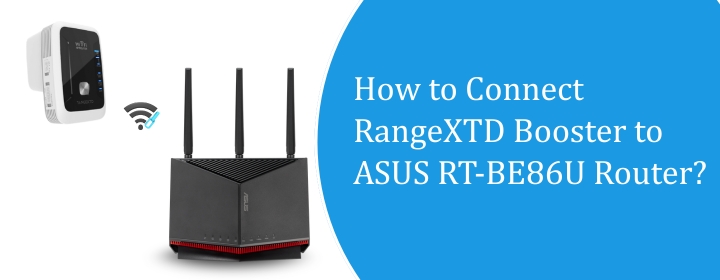
How to Connect RangeXTD Booster to ASUS RT-BE86U Router?
You can connect your RangeXTD extender with any router with WPS or not. There are two methods to link up your extender with router: one is through WPS and if router doesn’t support WPS, interface is available for connection.
Here you will get to know about how to connect RangeXTD booster to ASUS RT-BR86U router.
Check ASUS RT-BE86U Router Settings
- Login first: Plug in, open a browser, hit 192.168.50.1 (yep, still that classic ASUS IP). Default user/pass is admin/admin unless you already set it. Change that ASAP.
- Firmware update: First stop: Administration > Firmware Upgrade. Mine shipped with something outdated. Hit the update button. Took about 5 minutes, rebooted, came back clean.
- WAN settings: Under WAN > Internet Connection. If your ISP is weird (PPPoE, static, etc.), this is where you punch it in. Most people just leave it at “Automatic IP” and it works. Mine needed PPPoE, so yeah, had to enter username/password from ISP.
- Wi-Fi basics: Go to Wireless. You’ll see 2.4GHz, 5GHz, and 6GHz bands. Give each SSID a name you’ll actually recognize. Pro tip: don’t just call them all “ASUS”. Makes troubleshooting a nightmare. Also, WPA3 is on by default, but if your old laptop throws a fit, switch it to WPA2/WPA3 mixed.
- AiMesh: If you’ve got another ASUS router lying around, check AiMesh. You can add nodes from there. Pretty painless, actually.
- QoS / Traffic stuff: Adaptive QoS > Bandwidth Monitor. Turn it on if you want to see which device is sucking up all the bandwidth. Handy when the Xbox decides it wants 100GB updates in the middle of a Zoom call.
Security
ASUS bundles AiProtection (Trend Micro stuff). It’s in AiProtection > Network Protection. Worth toggling on if you don’t already run other security appliances.
Advanced nerd stuff.
- Port forwarding = WAN > Virtual Server / Port Forwarding
- VPN setup = VPN tab (supports OpenVPN, WireGuard, PPTP, etc.)
- Custom DNS = LAN > DHCP Server (scroll to “DNS and WINS Server Setting”).
Connect RangeXTD Booster to ASUS RT-BE86U router
via WPS
- Stick it into an outlet near the ASUS router first. Don’t overthink placement yet — you just need it close while setting up. Lights will start flashing like it’s trying to wake up.
- On the RT-BE86U, it’s that little “WPS” button on the side. Kind of easy to miss if you’ve never used it.
- Hold it for about 2 seconds until you see the WPS LED blinking. That’s the router basically saying, “ok, I’m listening for a device.”
- RangeXTD has a WPS button too — usually dead center, sometimes labeled. Press and hold it a couple seconds. The lights will start doing their disco routine.
- Give it like a minute. Router and booster will handshake behind the scenes. You’ll know it worked when the RangeXTD stops flashing like crazy and settles into a solid light (usually green).
- Once they’re paired, unplug the booster and move it halfway between the ASUS and your dead zone. Don’t stick it right at the edge of your WiFi range — it’ll just repeat garbage if the signal’s already weak.
- Jump on with your phone/laptop, look for the extended network. Sometimes it copies your main SSID, sometimes it adds “_EXT” or something. Connect, run a speed test, make sure it’s not crawling.
via Interface
- Stick it into a wall socket, wait until the LEDs settle. You should see it broadcasting its own WiFi network like RangeXTD-setup or something along those lines.
- On your laptop/phone, jump onto that temporary WiFi network. No internet yet, that’s normal.
- Open up a browser. Type in either 192.168.7.234 into address bar, this will load the RangeXTD login interface. Default login is usually admin/admin.
- The interface is pretty barebones. Look for “Repeater” or “Extender” mode. Select it.
- It’ll run a scan and show a list of WiFi SSIDs. Pick your ASUS RT-BE86U’s WiFi name (probably the 5GHz band unless you want range over speed).
- Type it exactly the same as you use on your main router. Case-sensitive, no typos. Hit next/confirm.
- You can either keep it the same name as your ASUS WiFi (so devices switch seamlessly) or add “-EXT” at the end if you want to see which is which. Up to you.
- The booster will restart. Takes about a minute. The lights should go steady after that.
- Now hop back onto your ASUS network (or the new extended one if you renamed it). Check if you can actually browse. If it’s working, the booster is tied into the ASUS.
Hope, this guide helps you to connect RangeXTD booster to ASUS RT-BE86U router.